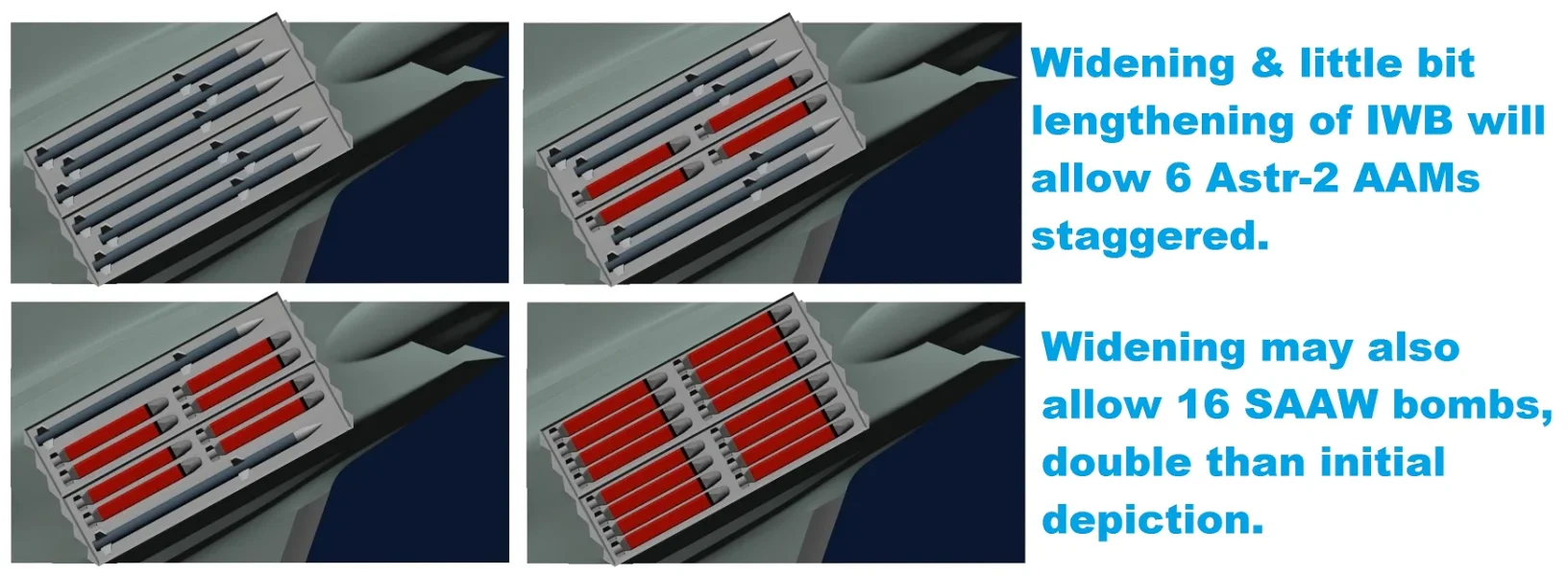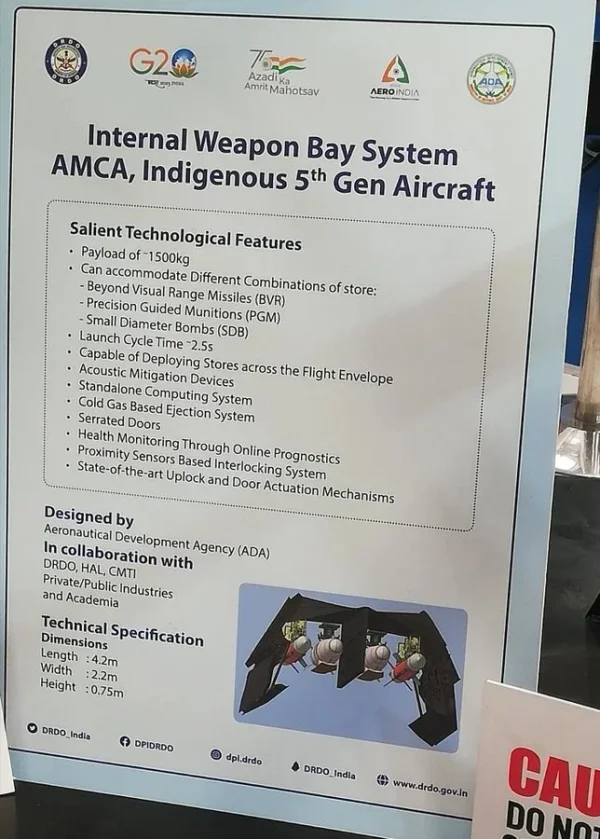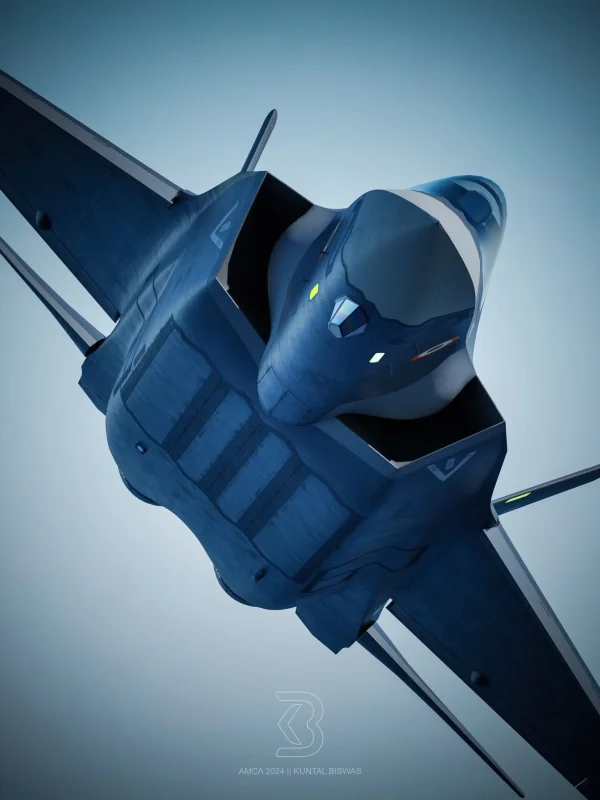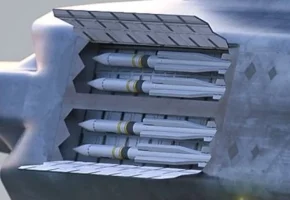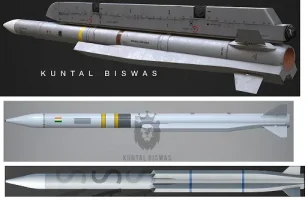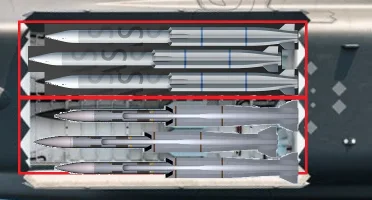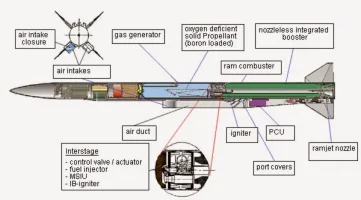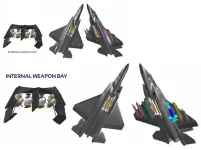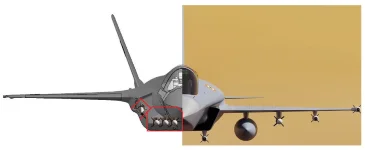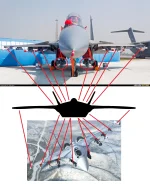Regular
- Messages
- 57
- Reactions
- 27
- Points
- 18
It is very difficult to decipher some elements in the demo cockpit display. Those who play DCS, MSFS & other simulators might be able to guess better.
Top row:

> AP - Auto Pilot
> AHLD - Altitude Hold?
> ASEL - Altitude Select?
> FD - Flight Director?
> L | G ?
> AT - Auto Thrust?
-------------------------
> NAV - Navigation map/mode active?
> 0.35 206, 0.25 151 ?
> FUEL 2931, 2350 - remaining fuel.
> 027 degree ?
> 6090, 5080 - Altitude?
-------------------------
> SPOO1?
> RT1, RT2?
> VOR - VHF Omni-directional Range?
> TAC - Tactical air navigation?
> IFF M3 - Interogate Friend or Foe frequency select?
> M?
> DISP - Display options?
> 50X TR?
--------------------------
> 02 PKTS BULLS?
> 068 / 102 NM, 273 / X88 NM - may be navigation beacons bearing, distance.
> AMCA TAKE EASTERN PKT ??
--------------------------------------------------------------------------------------------------------------------
Multiple systems status

> 2 circles at top corners with 52, 17 - could be nozzle position open %.
> A/ICE - Engine Anti-ice heating OFF / AUTO.
> Vertical white scale & green bar, range 1-10, AB (After Burner), value 82%, 88% - Engine RPM %.
> Vertical yellow scale & greenbar, range 2-10, value 610, 671 - could be engine temperature.
> Small vertical white scale & green bar, range 0-200, FF value 31, 83 - could be Fuel Flow.
> REMN 2931 - Remaining Fuel?
> INT 2350 - Internal Fuel?
> BINGO 400 - Bingo Fuel mark.
But INT should be total & REMN should be less than that, right?
> HYD1, HYD2 280 BAR - Hydraulic pressure.
> DC 28.0 V, AC 114 V - Electricity.
> OIL 6.6, 6.9 BAR - Engine oil pressure.
> LPL, LPR ON - LP no idea, but on Left & right are ON.
> BPL, BPR - BP no idea, but on left & right.
May be LP, BP are pumps.
-----------------------------------------------------------------------------------------------------
Navigation, Map display

> LOC - Localizer?
> DCN? - Display Contrast?
> DCL? - Display Color?
> SCL? - Symbols Color?
> DAN?
> FD?
> FPI?
> OVR? - Overlay?
> OBL?
> Lower left corner, blue color : ETA 11:30:55 - Estimated Time of Arrival at waypoint?
> Lower center, blue color : EF with some number - no idea
> Lower right corner, 096/3.42 NM, 058/2.4 NM - Waypoint bearing/distance?
> Top right corner, 6100, 4550 - Altitude?
Top row:
> AP - Auto Pilot
> AHLD - Altitude Hold?
> ASEL - Altitude Select?
> FD - Flight Director?
> L | G ?
> AT - Auto Thrust?
-------------------------
> NAV - Navigation map/mode active?
> 0.35 206, 0.25 151 ?
> FUEL 2931, 2350 - remaining fuel.
> 027 degree ?
> 6090, 5080 - Altitude?
-------------------------
> SPOO1?
> RT1, RT2?
> VOR - VHF Omni-directional Range?
> TAC - Tactical air navigation?
> IFF M3 - Interogate Friend or Foe frequency select?
> M?
> DISP - Display options?
> 50X TR?
--------------------------
> 02 PKTS BULLS?
> 068 / 102 NM, 273 / X88 NM - may be navigation beacons bearing, distance.
> AMCA TAKE EASTERN PKT ??
--------------------------------------------------------------------------------------------------------------------
Multiple systems status
> 2 circles at top corners with 52, 17 - could be nozzle position open %.
> A/ICE - Engine Anti-ice heating OFF / AUTO.
> Vertical white scale & green bar, range 1-10, AB (After Burner), value 82%, 88% - Engine RPM %.
> Vertical yellow scale & greenbar, range 2-10, value 610, 671 - could be engine temperature.
> Small vertical white scale & green bar, range 0-200, FF value 31, 83 - could be Fuel Flow.
> REMN 2931 - Remaining Fuel?
> INT 2350 - Internal Fuel?
> BINGO 400 - Bingo Fuel mark.
But INT should be total & REMN should be less than that, right?
> HYD1, HYD2 280 BAR - Hydraulic pressure.
> DC 28.0 V, AC 114 V - Electricity.
> OIL 6.6, 6.9 BAR - Engine oil pressure.
> LPL, LPR ON - LP no idea, but on Left & right are ON.
> BPL, BPR - BP no idea, but on left & right.
May be LP, BP are pumps.
-----------------------------------------------------------------------------------------------------
Navigation, Map display
> LOC - Localizer?
> DCN? - Display Contrast?
> DCL? - Display Color?
> SCL? - Symbols Color?
> DAN?
> FD?
> FPI?
> OVR? - Overlay?
> OBL?
> Lower left corner, blue color : ETA 11:30:55 - Estimated Time of Arrival at waypoint?
> Lower center, blue color : EF with some number - no idea
> Lower right corner, 096/3.42 NM, 058/2.4 NM - Waypoint bearing/distance?
> Top right corner, 6100, 4550 - Altitude?









